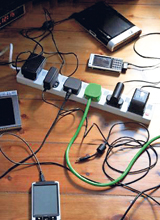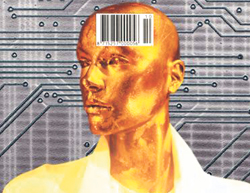Living in a country where English is not the first language, you may have often heard teachers and elders emphasise the importance of being a capable speaker of English – the international language of business and diplomacy.
Having a common language enables people across borders and continents to link, communicate, trade and collaborate. Language is not the only common factor that enables increased collaboration and trade. Apart from a common language, the world has also adopted common units of measurement and agreed on a numbering system for telecommunications where each country has been assigned a dialling pr-fix. These agreements or standards are what enable the world to work together.
Imagine you were going to set up a business in Sri Lanka to make shoes. This is simple enough if you plan to sell your shoes domestically. However, you will run into enormous difficulties if you decided to export the shoes you make, because shoe sizes are different from one country to another.
A size 48 shoe in one country would be a size 6 in another and a size 12 in yet another, so you will have to have different production lines for each export destination and this would increase your manufacturing costs and thus the price competitiveness of your product. The same applies to paper sizes to a lesser extent, and clothes.
On the other hand, a USB memory key manufactured in Singapore will work on your computer just as well as one manufactured in the United States. So if you were to start a business that manufactures USB devices, you may distribute your products worldwide without ever having to worry about compatibility.
The acceptance of TCP/IP as the standard network protocol is ultimately the secret behind the materialisation and success of the 'idea' called the Internet. A standard communication protocol in itself is not sufficient to broaden the scope of Information Communication Technology and its various applications. It is also necessary that the data that is exchanged is meaningful and readable.
The best example I can think of to illustrate this point is the use of barcodes. You may have noticed that at some supermarkets the items you purchase have a barcode on their label which the check-out operator scans to enter into your item list. However there are many other items at the supermarket which does not have a barcode where the operator will have to enter manually by typing in a number. Some items may have barcodes that the operator cannot scan. Some items may be too small or too awkwardly shaped to carry a normal barcode.
From a technological point of view it is easy to substitute the lengthy and arduous process of weighing a product and manually entering the long product code with the much simpler process of scanning a barcode and an automated system filling in the rest of the details. This is a good example where simple technology can be used to improve a business process and increase employee productivity.
 |
To benefit from such a system however, all manufacturers should include a barcode on their products that is unique and readable. This calls for standardisation of information across a broad spectrum starting with the manufacturer all along the supply chain up to the point of sale because the system depends on the barcode on a packet of biscuits being different from that on a packet of milk. Chances are that, the next barcode you see is one that is regulated by an international non-profit organisation called GS1 which is responsible for developing and regulating barcodes used by manufacturers in many different industries.
Even the simplest barcode that you see on the back of a book are regulated and conforms to an international standard. They develop and allocate different types of barcodes for different types of products based on requests made by the industry. If you are a manufacturer who needs to put a barcode on one of your products, chances are that GS1 will be able to allocate an appropriate barcode for you that is globally unique. So whether your product is then scanned at the checkout of a supermarket in Colombo or Colombia, it will be recognised as a unique product. Barcodes also encode information about the product such as their batch number for example which can be useful if a certain batch of the product has to be recalled for whatever reason.
Adoption of technology by businesses, governments and even individuals has a lot more to do with conforming to standards and common protocols than meets the eye and this is as it should be, because the benefits we aim to achieve by using ICT in particular include improvements in our ability to communicate, collaborate and trade globally.
Write in with your questions, comments and thoughts to technopage@gmail.com
|


